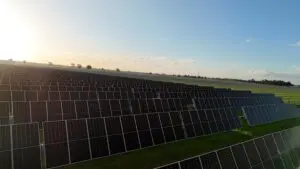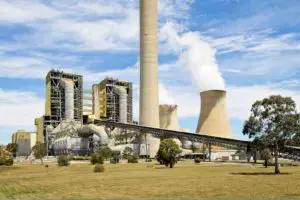Summary
FY18 futures prices in the latest week ended March 10 rose another 4% and – as figures 11 and 12 below show – FY18 prices in Victoria are equivalent to those in South Australia, with NSW only $5 MWh behind.
The overall increased cost to consumers is now up around $11 billion, although this assumes that every contract is fully repriced.
We will look at what is actually happening to consumer price offers later. The increase in grid prices is just the same as if the battery + PV price had fallen 25%.
Rising prices are a natural part of markets. They signal the need for new investment. Only producers complain when pries are low and no one except shareholders listen. When prices are high it’s front page news. Prices are not going back to 2015 levels for a long time.
It’s important to understand that the rise in baseload futures reflects an expectation that the market will be tight for energy. Futures prices don’t convey much information about blackout risk.
By our counting there is now ~1.6GW of wind and ~1.16GW of utility PV under construction in the NEM but only a small fraction of this will be on line in FY18.

Even including rooftop PV we still wont quite replace Hazelwood in terms of energy assuming capacity factor of 35% for wind and 28% for utility PV.
More to the point is what will happen to average prices. EG the PV will lower daytime prices but have no impact on overnight prices.
There are ways to deal with the volatility and building the wind out of South Australia is certainly a start but without more planning higher prices for volatility hedges still look on the cards.
Using gas for electricity is DUMB. Gas is tight and needs to be used for heating processes, ie non crease fabrics, cooking, fertilisers and chemicals. Wasting it on electricity when there are alternatives is so yesteryear.

Turning to the weekly action
- Volumes were soft this week reflecting ongoing mild weather and back at 2015 levels
- Future prices FY18 rose 12% in Victoria during the week and 4% in NSW. FY19 prices were up a more modest 2%
- Spot electricity prices. Were on average lower during the week than last year mainly driven by Victoria. Volatility was low with only a couple of incidents where prices were over $300 MWh and Victoria also saw a negative price of $50 MWh
- REC Unchanged.
- Gas prices remained high. A new Fig. 13 shows the average of Adelaide, Brisbane and Sydney prices, itself averaged over 30 days. The Figure clearly shows the lift in prices this year and you can see the pickup in February and early March from January. There are plenty of answers for more gas supply including LNG imports or a diversion of LNG related gas from QLD. Origin Energy holds the key year. Not only does it have 700 PJ of proved reserves it can quickly develop in QLD at its Ironbark field, its partner APLNG (ORG owns 37.5%) has about 1 mt of LNG which is essentially uncontracted and sold on the spot market. That’s about 60 PJ per year of gas at the field that could be redirected to the domestic market. Of course any idea the Govt. might have about increasing the PRRT will go straight out the window if the LNG guys are going to “help the Government” out.
- Utility share prices: were soft. ORE was very soft. AGL is up 40% over the past 12 months reflecting the market’s judgement of its ability to make money from the higher pool prices. The $1 bn Hazelwood closure liability is not being read through to AGL just now. One day it will be.

Share Prices


Volumes

Base Load Futures


Gas Prices


Note: To hear Giles Parkinson and David Leitch dissect the week’s events, including the Tesla vs gas, and questions about who is in charge, please click on the Podcast link below.
David Leitch is principal of ITK. He was formerly a Utility Analyst for leading investment banks over the past 30 years. The views expressed are his own. Please note our new section, Energy Markets, which will include analysis from Leitch on the energy markets and broader energy issues. And also note our live generation widget, and the APVI solar contribution.









